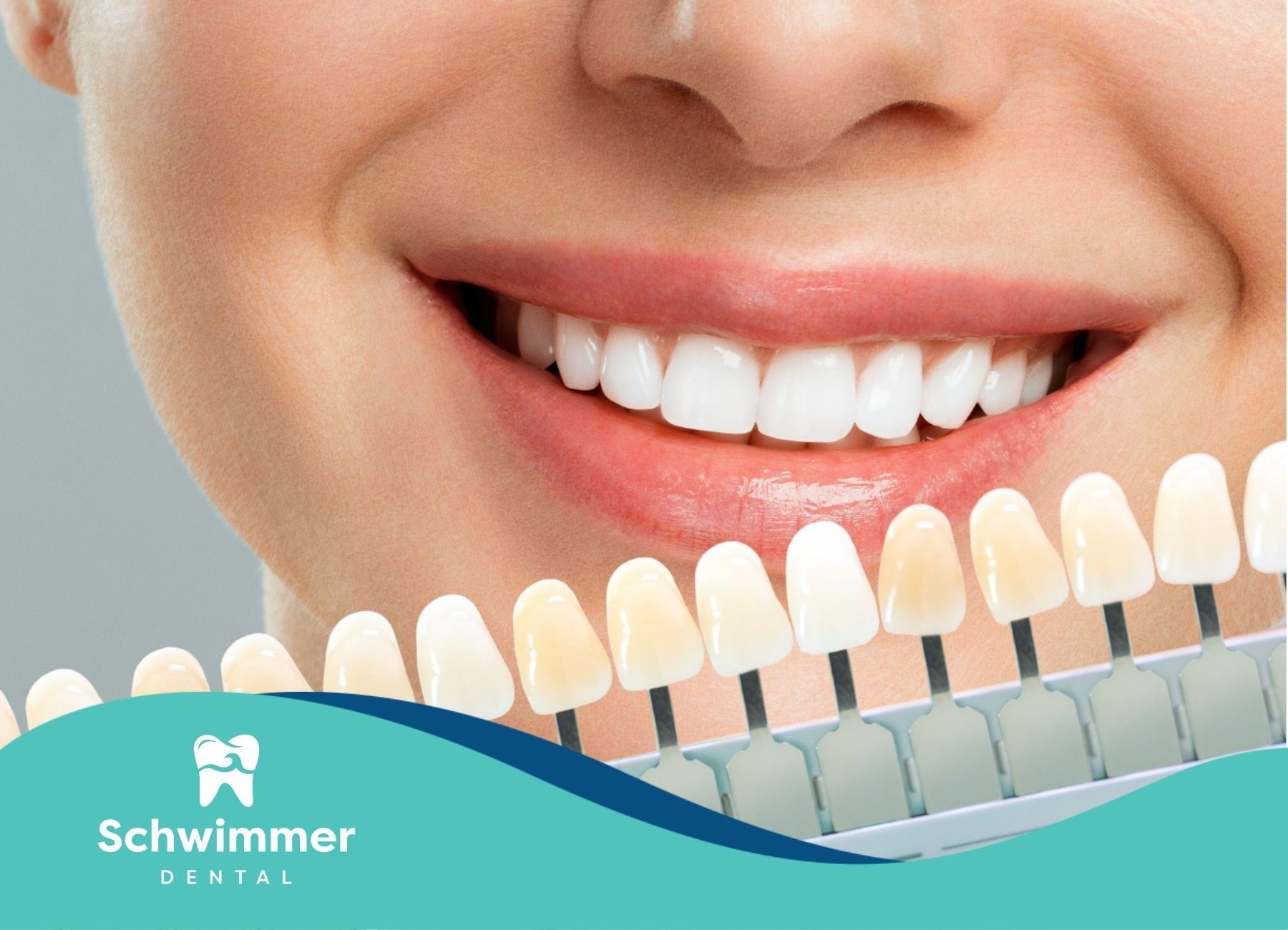How to Make Flossing Fun for Kids: A Parent’s Guide
Getting your child to floss can feel like a daily battle, but it’s one of the most important habits for their long-term oral health. While brushing removes surface plaque, flossing reaches the tricky spaces between teeth where cavities often begin. The sooner kids start, the more natural it becomes.
I remember a patient, Ivy (pseudonym used), a bright six-year-old who dreaded flossing. Her mom tried everything—reminders, rewards, even timers—but nothing worked. That changed when we turned flossing into a game. With a fun chart and a superhero-themed flossing challenge, Emily started looking forward to it!
If you’re facing a similar struggle, don’t worry—there are plenty of creative ways to make flossing fun for your child.
Fostering Good Habits Early
Why Flossing is Important for Children
Flossing is a critical part of maintaining dental health, especially for children. While brushing removes plaque from the surfaces of teeth, it often misses the gaps between them.
This is where food particles and plaque can accumulate, leading to cavities and gum disease. For young mouths, establishing the habit of flossing early can set the stage for a lifetime of good oral hygiene.
Children might not recognize the importance of flossing immediately, but as a parent, you can help them understand its significance. By incorporating flossing into their daily routine, you give them the tools they need to take care of their smiles.
Benefits of Teaching Kids to Floss
Teaching your child to floss comes with several benefits beyond just removing food particles. Here are some key advantages:
- Prevent Cavities: Regular flossing helps remove plaque that can lead to decay.
- Healthy Gums: Flossing reduces the risk of gum disease, which can start even in childhood.
- Building Lifelong Habits: By fostering good oral care routines early, children are more likely to continue these practices into adulthood.
- Boosting Confidence: A healthy smile contributes to a child's self-esteem, allowing them to feel good about their appearance.
- Educational Opportunity: Flossing can teach children the value of health and personal care, helping them understand the importance of maintenance and prevention.
Engaging children in their dental care from an early age can arm them with the knowledge and skills they need to keep their smiles bright and healthy long into the future. Flossing might seem like a small task, but its impact is profound!
Making Flossing Fun
Flossing can be an exciting part of your child's daily routine. By making it enjoyable, you encourage your kids to develop essential dental habits. Here are some creative ways to introduce and engage your children in flossing.
Creative Ways to Introduce Flossing
- Flossing Characters: Create fun characters using floss, such as "Flossy the Superhero." Use storytelling to depict Flossy saving the day by helping kids keep their teeth clean. This can spark their imagination and motivate them to join in the fun.
- Floss Art: Use colored floss to make art projects. Show your kids how to create designs or shapes using floss, blending creativity with dental hygiene. This activity can help them see floss as a fun tool rather than a chore.
- Thematic Flossing Days: Designate specific days for themed flossing. For example, "Pirate Floss Day," where kids can dress up as pirates and "treasure hunt" for hidden floss samples. This unique approach will make the activity special and memorable.
Engaging Activities to Encourage Flossing
- Flossing Games: Incorporate not just education but also play into the flossing process. Create games such as "Flossing Bingo" where each square represents a part of the mouth to be flossed. Completing a row can win your child a small reward.
- Flossing Dance Challenge: Combine movement with dental health. Create a fun dance routine that includes flossing motions. You can even film it and share it with family members or friends, making it a social activity that kids will be excited about.
- Floss Calendar: Make a colorful flossing chart or calendar to track your child's progress. For every successful flossing session, they can put a sticker on the calendar. Keep it visible in the bathroom as a reminder. Celebrate milestones together—such as a week's worth of successful flossing—with a small treat or family activity.
- Interactive Videos: Find engaging educational videos featuring animated characters that display the right way to floss. Watching these together can make it a team effort, where you can discuss what they learned and encourage them to try it out.
Bringing creativity and engagement into the flossing routine can turn what might seem like a chore into an exciting opportunity for fun and learning. This encourages your children to develop lifelong habits for good dental health while strengthening your bond with them through shared activities.
Getting Started
Getting your child excited about flossing can set the foundation for a lifetime of good dental habits. You can make the process enjoyable and straightforward by choosing the right tools and teaching proper techniques.
Choosing the Right Flossing Tools
When it comes to flossing tools, there are several options available that cater specifically to children. It's essential to select tools that are comfortable and make the process easier for small hands. Here are some tools to consider:
- Floss Picks: These are great because they combine a piece of floss with a handle, making it easy for little hands to maneuver.
- Soft Floss: Opt for softer floss that is gentle on tender gums. This can help reduce discomfort and encourage your child to floss regularly.
- Flossing Devices: Tools like water flossers can be a fun alternative. They use a stream of water to clean between teeth and may be less intimidating for some kids.
Proper Flossing Technique for Kids
Teaching your child the proper technique for flossing can make a significant difference in their dental care routine. Here’s how you can guide them through the process:
- Start with a Suitable Length: Use about 18 inches of floss. Show your child how to wrap the ends around their fingers for better grip.
- Gentle Movement: Encourage your child to gently slide the floss between their teeth. Remind them not to snap it down, as this can hurt their gums.
- Curve and Clean: Teach them to curve the floss around each tooth in a C-shape. This technique helps to maximize contact with the tooth surface.
- Clean Below the Gumline: Explain the importance of also cleaning under the gumline for thorough cleaning.
- Repeat: Remind them to use fresh sections of floss for each gap. This prevents spreading bacteria between teeth.
By selecting the right tools and demonstrating a proper flossing method, you can set your child on the path to good oral hygiene practices early on. Making flossing a fun part of their routine can help them develop these essential skills with ease and excitement!
Overcoming Challenges
Teaching your children to floss can present some challenges. However, with the right strategies, you can motivate and guide your little ones through this important dental hygiene habit.
Here are some tips on how to deal with resistance and address common struggles when it comes to flossing.
Dealing with Resistance
Children may often resist the idea of flossing. They might find it tedious or uncomfortable, which can lead to reluctance. Here are some effective strategies to address this resistance:
- Make it Interactive: Turn flossing into a fun activity. Encourage your child to pick their favorite song to listen to while they floss. This can make the experience more enjoyable.
- Lead by Example: Show them that you also floss your teeth. Kids love to imitate their parents. If they see you making it a part of your routine, they may be more willing to follow suit.
- Use Motivational Tools: Consider creating a colorful chart where your child can mark off each successful flossing session. Provide stickers or small rewards after a week of consistent flossing.
Addressing Common Flossing Struggles in Children
Some children might face specific challenges during flossing. Knowing these hurdles can help you find solutions together. Here are some common issues and tips to overcome them:
- Difficulty with Technique: Some kids may struggle to wrap the floss correctly around their fingers or maneuver it between their teeth. Demonstrate the technique yourself and offer gentle guidance. Practicing together can help them become more confident.
- Sensitivity: If your child has sensitive gums, they might find flossing uncomfortable. Consider using softer floss or dental picks that are designed for beginners. Gradually increasing the pressure they use can help them adjust over time.
- Forgetfulness: Kids can easily forget to floss. Consider incorporating it into their daily routine, perhaps after brushing their teeth. Reminders can also be helpful—try setting a timer or using an alarm on your phone.
By staying positive and engaged, you can help your children overcome these hurdles. With patience and encouragement, flossing can transition from a challenge to a celebrated part of their daily routine.
Celebrating Success
Celebrating your child's accomplishments in flossing can encourage positive habits and boost their confidence. Implementing reward systems and tracking their progress can transform flossing into a fun and engaging activity.
Reward Systems for Consistent Flossing
Creating a reward system can make flossing an exciting routine for your child. Rewards can range from small treats to special privileges. Below are some ideas to inspire your reward system:
- Stickers: Allow your child to collect stickers for each successful flossing session. After a certain number of stickers, they can redeem them for a larger reward.
- Point System: Assign points for consistent flossing. After earning a predetermined number of points, your child can choose a reward like an extra story at bedtime or a family game night.
- Flossing Chart: Use a chart to track daily flossing. When the chart is completed for one month, your child can have a small celebration or a fun outing.
Tracking Progress and Encouraging Continuity
Keeping track of your child’s flossing can help reinforce the importance of dental hygiene. A visual progress tracker can keep them motivated and accountable.
Here’s how you can implement this tracking system:
- Create a Flossing Calendar: Designate a calendar for your child where they can mark each day they floss. This will provide a visible reminder of their consistency.
- Monthly Review: At the end of each month, review the calendar together. Discuss the successes and celebrate achieving goals.
- Incorporate Fun Challenges: Challenge your child to floss every day for a week. Completing the challenge can earn them a reward, making it both a fun and educational experience.
By using reward systems and tracking progress, you make the process of teaching your child flossing techniques exciting and engaging. You create an environment that not only focuses on dental health but also emphasizes the importance of consistency and achievement.
Fun and Effective Flossing Techniques
Flossing doesn’t have to be a chore for your child. By introducing creative and engaging methods, you can turn daily dental care into a fun and enjoyable routine. Here are two exciting techniques that can help your child embrace flossing.
The "Flossing Dance" Method
Who says flossing can't be a dance party? The "Flossing Dance" method combines movement and music to make the experience lively. Start by choosing a fun song that your child enjoys. As the music plays, encourage your child to floss while doing simple dance moves.
- Play a selection of upbeat songs.
- Create a simple dance routine that includes flossing movements.
- Encourage your child to make up their own dance steps while flossing.
- Celebrate their creativity and enthusiasm.
This method not only makes flossing enjoyable but also helps improve their coordination. Your child will look forward to flossing, seeing it as a dance party rather than a task.
Storytelling While Flossing
Storytelling is a powerful tool for engagement. While your child flosses, create a story that captivates their imagination. Here’s how to make it effective:
- Choose a Theme: Select a fun theme, such as superheroes, magical creatures, or adventurous explorers.
- Involve Your Child: Ask your child to contribute to the story, making it more interactive. Incorporate their favorite characters or pets into the narrative.
- Keep It Short: Ensure the story is brief, ideally lasting the duration of flossing, so your child stays focused.
- Use Visuals: If possible, use pictures or props related to the story to enhance the experience.
Don’t let flossing struggles keep your child from a healthy smile! At Schwimmer Dental, we’re here to help kids build strong oral habits with gentle, expert care. Schedule a visit today and let’s make dental health fun and easy for your little one! Book an appointment now!
FAQs
At what age should kids start flossing?
Children should start flossing as soon as their teeth touch, usually around ages 2 to 3, with parental assistance.
How can I make flossing easier for my child?
Use fun flossing tools like flavored floss, floss picks, and songs or games to make the process enjoyable.
Why is flossing important for kids if they still have baby teeth?
Baby teeth are crucial for speech and chewing, and decay can affect permanent teeth. Flossing helps prevent cavities and gum disease early on.
Sources:
- https://www.sciencedirect.com/science/article/abs/pii/S0917239418301411
- https://www.colgate.com/en-sg/oral-health/brushing-and-flossing/dont-be-strung-up-by-floss-how-to-guide-for-flossing
- https://www.stanfordchildrens.org/en/topic/default?id=flossing-and-children-90-P01852
- https://pmc.ncbi.nlm.nih.gov/articles/PMC11011933/
- https://www.hopkinsmedicine.org/health/conditions-and-diseases/tooth-decay-caries-or-cavities-in-children



